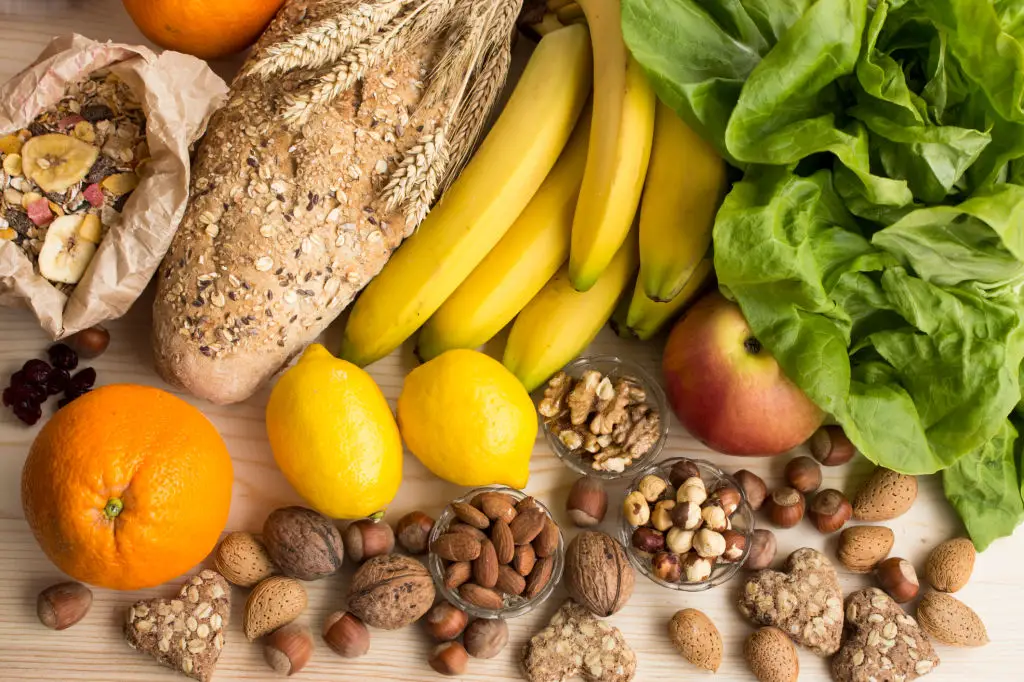11 Everyday Habits That Are Quietly Draining Your Blood Pressure-Regulating Potassium
Potassium helps relax blood vessel walls and supports the balance of fluids and minerals that keep blood pressure steady. (See: NIH Office of Dietary Supplements, "Potassium" fact sheet and American Heart Association guidance on diet and blood pressure.) Many of us assume potassium is something only patients with kidney disease need to track. The truth is simpler: small daily choices change how much potassium we get and how well it works. This article names everyday habits that can silently lower potassium levels or blunt its blood-pressure benefits. For each habit, you'll get a plain explanation, one or two practical swaps, and a note about when to check with your clinician. The aim is not to shame but to make change feel possible. Start with one habit and try one swap this week. Over time those small adjustments add up and support a steadier blood pressure and better energy. If you have heart or kidney conditions, or take medicines that affect electrolytes, talk with your provider before making big changes. Reliable sources we use include the American Heart Association and the NIH Office of Dietary Supplements, linked where relevant. Read on to discover practical, gentle steps that protect your potassium and your heart.
1. Skipping potassium-rich foods

Many people miss obvious potassium sources because they think a single fruit or side dish won't matter. A steady daily intake of potassium from foods like bananas, potatoes, spinach, beans and avocados helps the body manage sodium and keep blood pressure balanced (NIH Office of Dietary Supplements). Skipping those foods habitually reduces the reservoir your body can draw on when sodium spikes. Try adding one simple swap: include a cooked sweet potato or a handful of spinach with one meal each day. Another option is a half-cup of beans tossed into salads or soups twice weekly. These choices are easy to fit into real life and don’t require major meal overhauls. If you take blood-pressure medicines or have kidney disease, your clinician may advise tailored potassium goals, so discuss dietary shifts before making big increases.
2. Eating a lot of highly processed, salty foods

High sodium intake reduces the beneficial effects of dietary potassium because sodium and potassium work as partners to manage fluid balance and vascular tone. The American Heart Association recommends lowering sodium to help blood pressure and encourages boosting potassium-rich foods for balance. When processed meals, canned soups, and salty snacks make up many meals, potassium’s job becomes harder and you may need more of it just to keep blood pressure steady. Practical changes are straightforward. Swap one processed meal a day for a homemade or fresher option, check labels for lower-sodium choices, and season food with herbs and citrus instead of salt. These shifts also help with overall nutrition and energy. Remember, small steps matter — aim for gradual reductions so changes stick.
3. Overdoing certain over-the-counter laxatives

Some stimulant laxatives and frequent use of certain over-the-counter remedies can speed intestinal transit and lead to losses of electrolytes, including potassium. That loss can accumulate over time and affect how well potassium supports blood pressure. If you rely on laxatives for regularity, consider gentler alternatives like increasing dietary fiber, hydrating more, and adding small amounts of physical movement after meals. Bulk-forming fibers and psyllium often help without the same electrolyte risks. If you have chronic constipation or depend on laxatives, talk with your clinician or a registered dietitian to find safer long-term strategies and to check your electrolyte status.
4. Drinking too much alcohol regularly

Regular heavy alcohol intake can stress the kidneys and alter how electrolytes are handled, increasing the risk of potassium imbalance. Even when not extreme, frequent drinking can interfere with sleep, diet choices, and medication effectiveness, which together influence potassium and blood pressure. Moderation is a practical approach: limit intake to amounts within recommended guidelines, choose lower-alcohol options, and plan alcohol-free days each week. Replacing one evening drink with a potassium-friendly snack, like a small bowl of edamame or a banana, keeps both hydration and nutrient intake steadier. If you are on medications that interact with alcohol or affect electrolytes, consult your healthcare provider for tailored guidance.
5. Using some prescription diuretics or steroids without monitoring

Certain blood-pressure medicines called thiazide diuretics commonly lower potassium by increasing urinary excretion. Other drugs, including some steroids, can also change potassium levels in differing ways. This doesn't mean you should stop medication; rather, it highlights the importance of monitoring. Ask your clinician whether your prescriptions affect potassium and whether routine blood tests are needed. If your care plan allows, simple dietary additions such as potassium-rich vegetables or a clinician-approved supplement can counter low levels. Never change prescribed medication on your own. Work with your healthcare team to keep blood pressure controlled and potassium balanced safely.
6. Excessive caffeine from energy drinks and high-dose supplements

High intakes of caffeine, especially from energy drinks or concentrated supplements, can increase urine output and sometimes contribute to small losses of potassium. That effect may be modest for casual caffeine users, but frequent high doses paired with poor diet or dehydration can matter. Replace one energy drink a day with tea or a plain coffee plus a potassium-rich snack, like a small banana or handful of nuts. Also be mindful of hidden caffeine in supplements and preworkouts. If you notice jitteriness, sleep disruption, or changes in blood pressure, cutting back and checking in with a clinician is a wise step.
7. Frequent intense sweating without electrolyte replacement

During long or intense exercise sessions, especially in heat, potassium is lost through sweat along with sodium. For most moderate workouts, normal meals and water suffice, but for prolonged activity or frequent heavy sweating, targeted rehydration helps replace potassium and support blood pressure regulation. A simple approach is to include potassium-containing snacks post-exercise—banana, coconut water in moderation, or a small potato. Sports drinks with electrolytes are useful for long sessions, though watch added sugars and sodium levels. For older adults or those on diuretics, coordinate rehydration strategies with a clinician to avoid under- or over-correction.
8. Very low-carbohydrate or extreme fad diets

Some restrictive diets limit fruits, starchy vegetables, and legumes — major natural sources of potassium — which can lower daily intake over time. While low-carb plans work for many people, they may inadvertently reduce the potassium-rich foods that help blunt sodium’s effect on blood pressure. If you follow a low-carb approach, intentionally include low-starch potassium sources like leafy greens, avocados, nuts, and moderate servings of beans or lentils when tolerated. Small, planned additions keep the diet balanced without undoing dietary goals. If you have complex health needs, seek guidance from a registered dietitian to tailor a potassium-aware plan.
9. Cutting potassium with poor food prep (peeling and overcooking)

Potassium is a water-soluble mineral and can leach into cooking water when vegetables are boiled for long periods. Peeling starchy vegetables before cooking can further remove potassium-rich layers. Choosing methods that preserve nutrients — roasting, steaming briefly, or microwaving — helps keep more potassium in the food you eat. When boiling is preferred, use the cooking liquid in soups or stews to reclaim dissolved minerals. These small kitchen techniques are easy to adopt and help you get more value from the foods you buy while supporting blood pressure-friendly eating.
10. Chronic stress and poor sleep habits

Chronic stress and disrupted sleep can alter hormones like cortisol and adrenaline that affect fluid balance and how the kidneys handle electrolytes, including potassium. Over time, poor sleep and constant stress can indirectly make it harder for lifestyle changes to improve blood pressure. Practical, gentle strategies work well: aim for consistent sleep times, reduce evening screen use, and use short relaxation practices such as breathing exercises before bed. These changes support overall hormone balance and can make potassium-rich choices more effective for blood pressure. If sleeplessness or anxiety is severe, seek professional support.
11. Ignoring kidney function changes and avoiding routine labs

Kidneys are the primary organs that regulate potassium. As kidney function declines, potassium can become harder to manage — levels may rise or fall depending on the situation and medications. This is why routine labs are important, especially if you’re older, have diabetes, high blood pressure, or take medicines that affect electrolytes. Talk with your clinician about how often to check basic metabolic panels that include potassium. Regular monitoring allows safe dietary adjustments and avoids unintended high or low potassium. Early detection and teamwork with your healthcare provider keep both potassium and blood pressure on healthier tracks.
A kinder, steadier approach to protecting potassium and blood pressure

Small, consistent shifts in daily routine protect the potassium that helps keep your blood pressure steady. Start with one habit from this list and try a single, achievable swap this week—maybe add a daily serving of spinach or check labels for sodium content. Remember that medication, medical conditions, and kidney health change how potassium behaves in the body, so stay connected with your clinician before making major dietary or supplement changes. Reliable sources like the American Heart Association and the NIH Office of Dietary Supplements provide clear background on potassium’s role and safe intake ranges. Change doesn’t need to be dramatic to be meaningful. Over weeks and months, modest additions add up to a gentler, more resilient cardiovascular system and a more confident you. We honor the wisdom that brought you here and encourage steady, kind progress—one simple choice at a time.